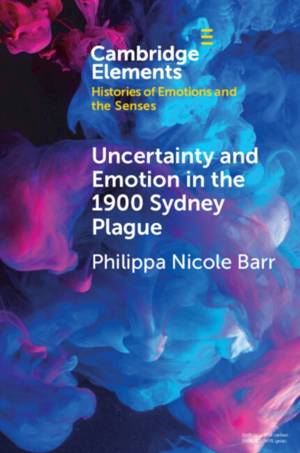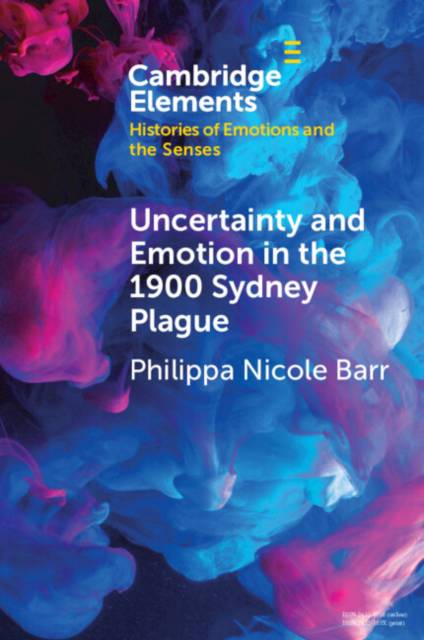
Door een staking bij bpost kan je online bestelling op dit moment iets langer onderweg zijn dan voorzien. Dringend iets nodig? Onze winkels ontvangen jou met open armen!
- Afhalen na 1 uur in een winkel met voorraad
- Gratis thuislevering in België vanaf € 30
- Ruim aanbod met 7 miljoen producten
Door een staking bij bpost kan je online bestelling op dit moment iets langer onderweg zijn dan voorzien. Dringend iets nodig? Onze winkels ontvangen jou met open armen!
- Afhalen na 1 uur in een winkel met voorraad
- Gratis thuislevering in België vanaf € 30
- Ruim aanbod met 7 miljoen producten
Zoeken
Uncertainty and Emotion in the 1900 Sydney Plague
Philippa Nicole Barr
€ 31,95
+ 63 punten
Uitvoering
Omschrijving
When the third global plague pandemic reached Sydney in 1900, theories regarding the ecology and biology of disease transmission were transforming. Changing understandings led to conflicts over the appropriate response. Medical and government authorities employed symbols like dirt to address gaps in knowledge. They used these symbols strategically to compel emotional responses and to advocate for specific political and social interventions, authorising institutional actions to shape social identity and the city in preparation for Australia's 1901 Federation. Through theoretical and historical analysis, this Element argues that disgust and aversion were effectively mobilised to legitimise these actions. As an intervention in contemporary debates about the impact of knowledge on emotion and affect, it presents a case for the plasticity of emotions like disgust, and for how both emotion and affect can change with new medical information.
Specificaties
Betrokkenen
- Auteur(s):
- Uitgeverij:
Inhoud
- Aantal bladzijden:
- 80
- Taal:
- Engels
- Reeks:
Eigenschappen
- Productcode (EAN):
- 9781108821063
- Verschijningsdatum:
- 11/04/2024
- Uitvoering:
- Paperback
- Formaat:
- Trade paperback (VS)
- Afmetingen:
- 152 mm x 229 mm
- Gewicht:
- 117 g

Alleen bij Standaard Boekhandel
+ 63 punten op je klantenkaart van Standaard Boekhandel
Beoordelingen
We publiceren alleen reviews die voldoen aan de voorwaarden voor reviews. Bekijk onze voorwaarden voor reviews.











